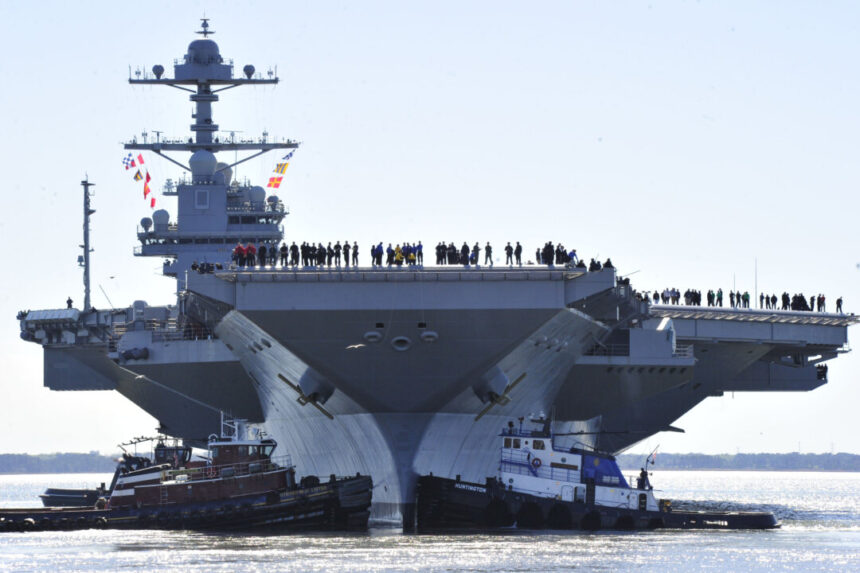The U.S. Navy has unveiled its strategy to surpass China’s military modernization efforts by 2027, with a focus on potential conflict preparation. The Chinese regime has directed the People’s Liberation Army (PLA) to be fully modernized and ready for war by 2027, coinciding with the PLA’s 100th anniversary. This timeline raises concerns about a possible invasion of Taiwan, as Chinese leader Xi Jinping prioritizes military reforms to ensure the PLA can deter or win a conflict over the island.
The U.S. Navy’s 2024 Navigation Plan, led by Adm. Lisa Franchetti, aims to enhance readiness for a potential conflict with China by 2027. Central to this plan is Project 33, which aims to improve the Navy’s long-term advantage and operational readiness by modernizing equipment and deploying robotic and autonomous systems for swift responses, particularly in the Indo-Pacific region.
Key goals of Project 33 include achieving 80% combat readiness for ships, aircraft, and submarines by 2027, and integrating advanced technologies like artificial intelligence and unmanned systems to strengthen the Navy’s ability to respond to emerging threats, especially in the Indo-Pacific.
The U.S. Navy is also focusing on developing long-range fires, non-traditional sea denial, and terminal defense capabilities to enhance power projection, block adversary access to strategic maritime areas, and protect naval assets with advanced missile and anti-aircraft systems.
Additionally, the Navy is enhancing its command-and-control capabilities by developing Maritime Operations Centers (MOCs) to coordinate naval forces across various domains and ensure readiness for decentralized operations. The Navy is closely studying global conflicts to shape its approach to future sea control, with a focus on integrating unmanned systems like drones and unmanned underwater vehicles into operations to enhance flexibility and operational effectiveness.
Overall, the U.S. Navy’s strategy aims to prepare for potential conflicts with China, maintain a free and open Indo-Pacific, and ensure critical shipping lanes remain accessible for global trade despite China’s anti-access/area denial strategy.
Central to China’s military doctrine, A2/AD seeks to shift the strategic balance by making it difficult for external forces to intervene in what Beijing considers its sphere of influence. Despite this, the U.S. Navy is rapidly modernizing to meet these challenges and is prepared to counter the CCP’s regional dominance efforts.
Views expressed in this article are opinions of the author and do not necessarily reflect the views of The Epoch Times.






